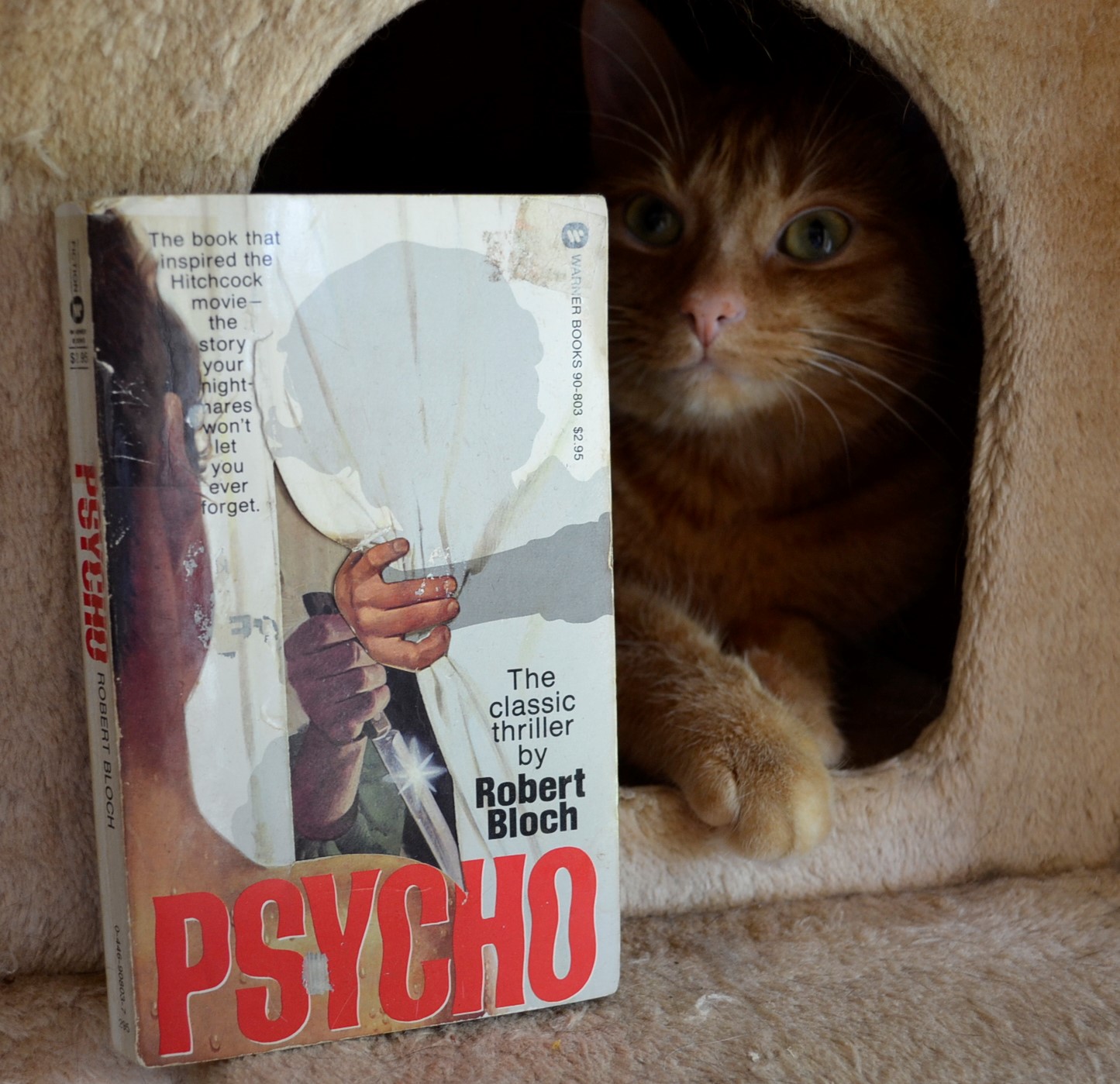It’s Finally Halloween!
Well, not quite Halloween for real, but at least it’s Halloween in August! This year I’ve dusted off some of the classic spooky novels I had stacked on my shelves — some of decidedly more renown than others. I’m excited to start discussing all of the scary stories.
It hasn’t been a very hot summer here. Though we have had a few days of higher temperatures, they’ve been interspersed with long periods of rain, cold fronts, and damp weather. I prefer the cold, so I haven’t had that hard of a time with it, but I know many summer people have been disappointed as a warm June gave way to a cold July.
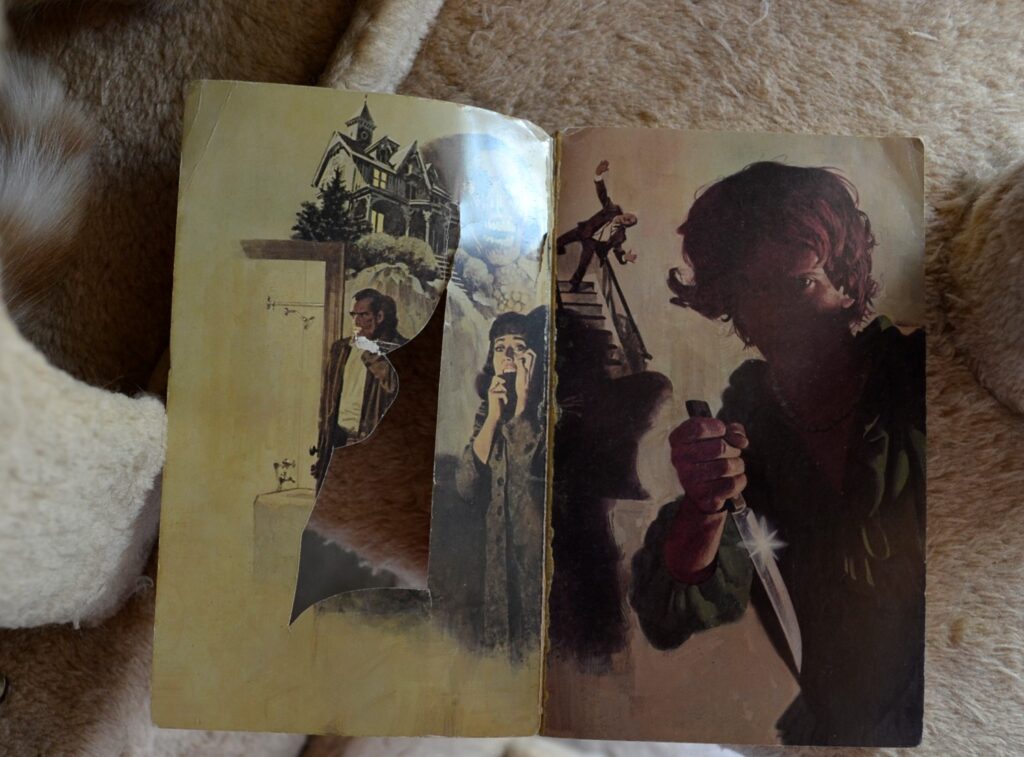
However, the cold air does smell like the promise of fall and reminds me that very soon, I’ll be thinking about carving pumpkins and going on drives to see all of the bursting colours of the foliage. It’s more than appropriate for this small taste of the October that is to come.
Can it Ever Compare to Hitchcock?
Robert Bloch’s Psycho was written in 1959, and Hitchcock’s Psycho shortly followed it in 1960. Probably the short interval of time between text and film is partly the reason why many people don’t even realize that there is a book in existence. But I think the primary reason has more to do with the irrefutable fact that Hitchcock’s Psycho is a film masterpiece. It took Bloch’s novel and refined it into something elegant and powerful as well as just downright scary.
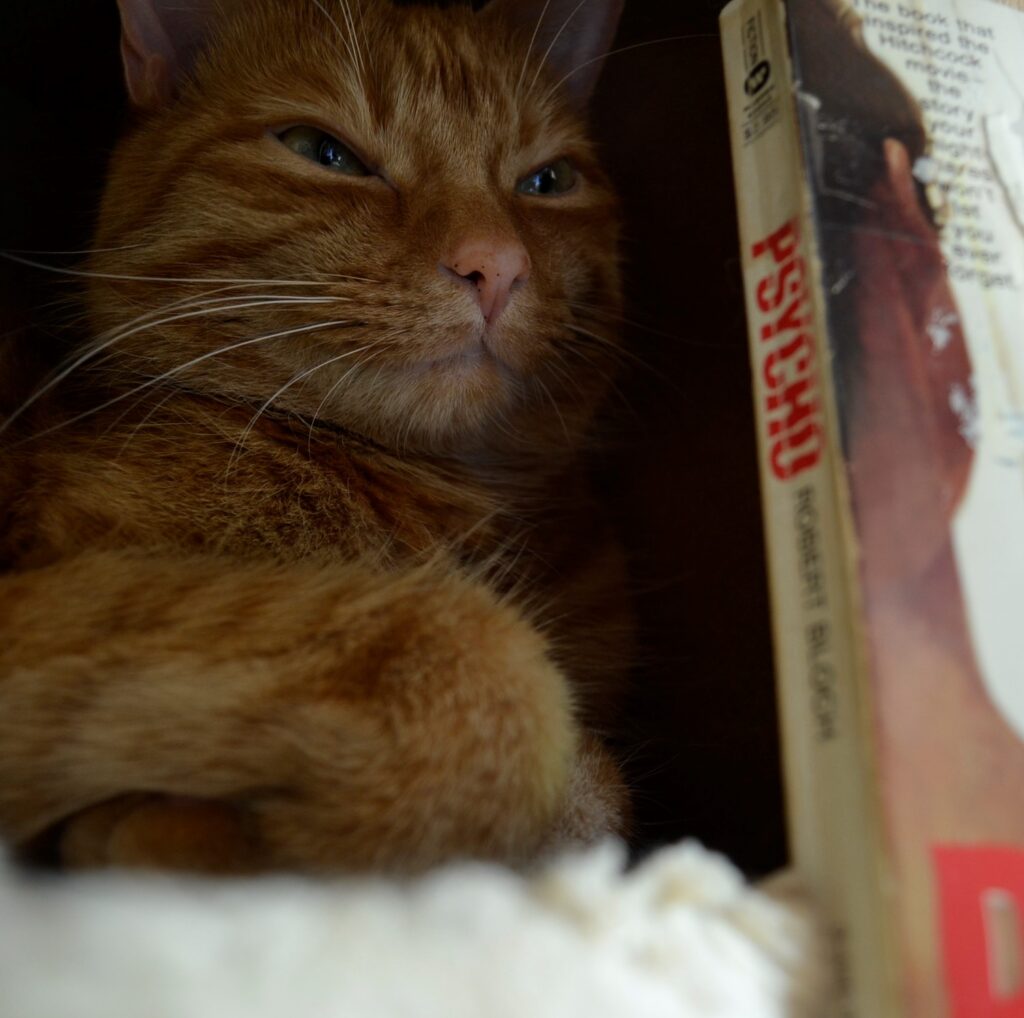
For those that are not familiar with either the book or the film — the plot revolves around Norman Bates who owns a motel and has a very complicated relationship with his dead mother. People start to disappear and forty thousand dollars is missing and it all leads back to Bates, his motel, and a very famous shower scene.
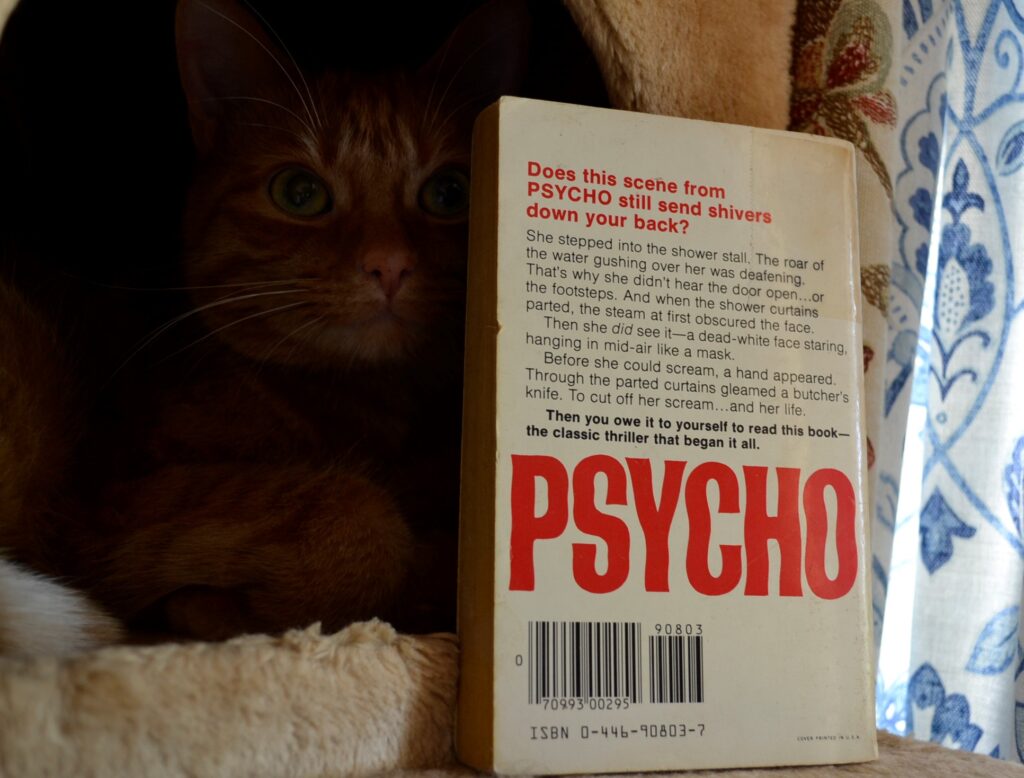
That’s not to say that Bloch’s novel wasn’t scary — it was a different kind of scary. Bloch’s novel puts more of the focus on Bates and also (a bit strangely, perhaps) on Sam Loomis, the boyfriend of missing Mary Crane. Bloch goes into Bates’ previous crimes, his psychology, and his relationship to his mother and the motel, all of which is fascinating. However, it’s important to note that this book was written in the late 1950s and Bloch’s psychology reflects the mistaken notions and beliefs of the time.
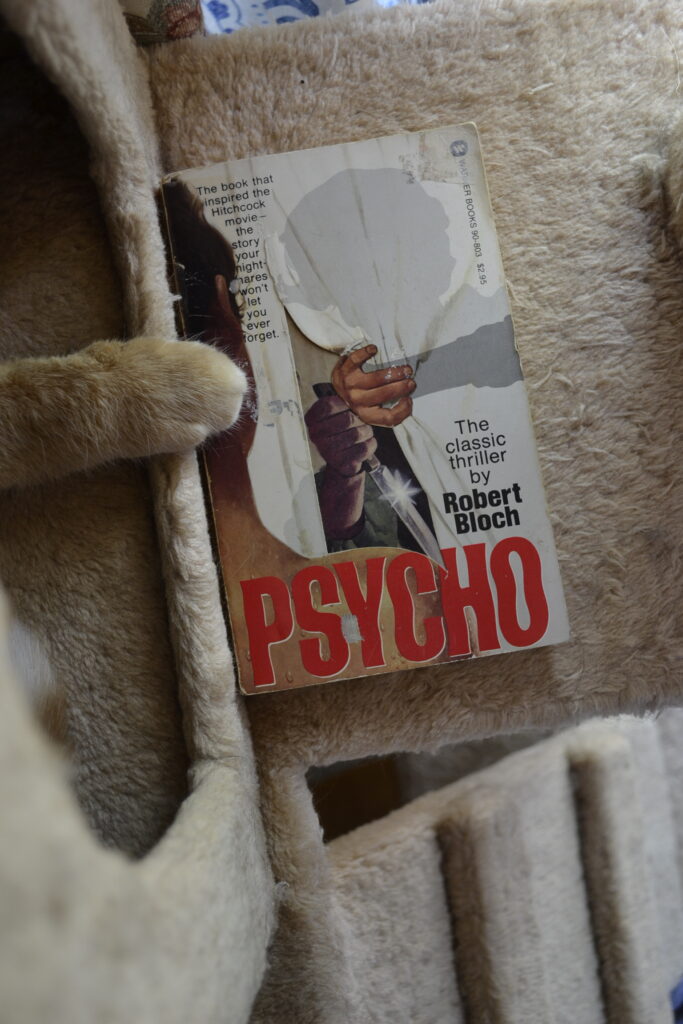
It’s still a compelling thriller, but there are moments in it that I’m glad did not make it to the film version.
A Classic Thriller
Bloch writes a twisting thriller that manages to surprise, even when you’ve watched the film first. The biggest piece of criticism I have for Bloch’s writing is that his pace sometimes does not match the amount of description he provides. He manages to propel the narrative forwards so quickly that it can get frustrating when he slows down for a passage of description — that shouldn’t seem lengthy but does because of what has come before it in the previous chapter.
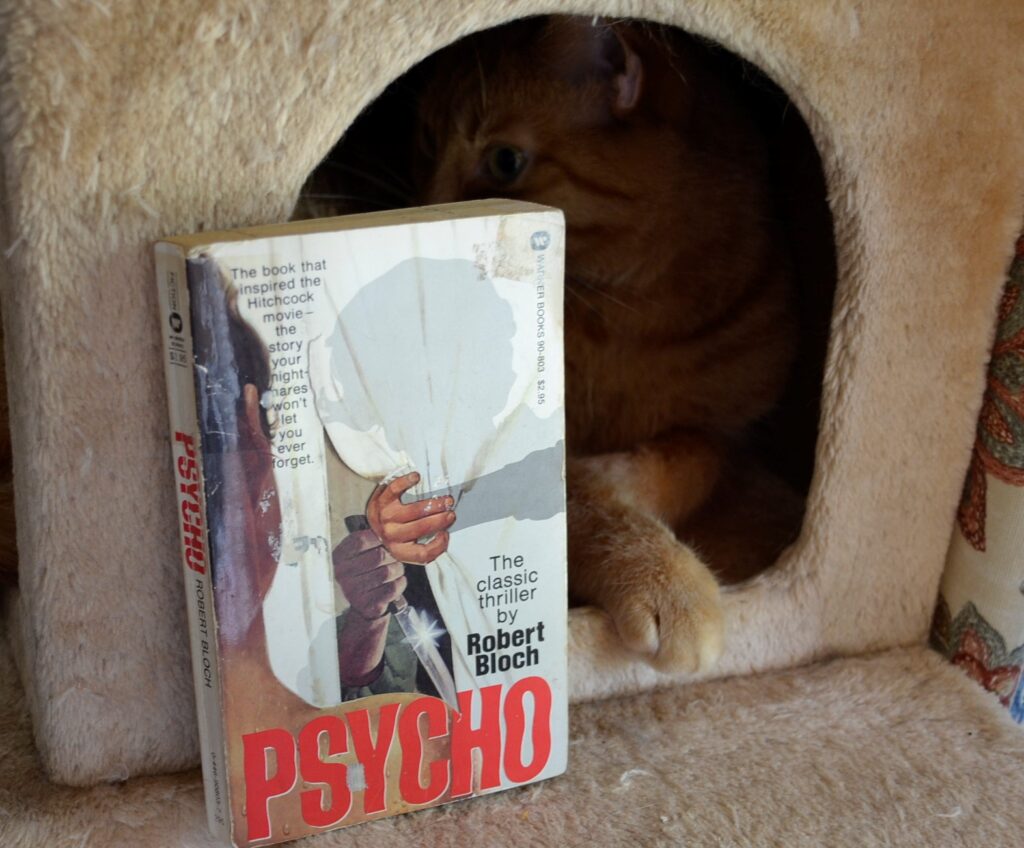
Additionally, Mary Crane’s sister Lila I found to be a bit aggravating of a character. She moves the plot forward, but at the same time she makes a lot of impulsive decisions that are painful to sit through. Though, perhaps it is a testament to Bloch’s skill that he makes the reader feel her impatience at not being able to find her sister and her frustration at her sister’s recent behaviour.
A Bad Legacy
I’ve seen Hitchcock’s film more times than I care to count but I still remember the first time when I was at my grandparents, staring at the glowing screen in the dark and listening to Crane’s scream when the chair finally turns all the way around and you hear Bates’ footsteps on the stairs to the cellar. I was utterly terrified.
More recently, however, I watched it on TCM during their feature Classic Films in the Rearview Mirror. Specifically there was a discussion of Bates’ character and how it lent itself to transphobic ideas.
In order to further explain, I’m going to have to talk about a spoiler so please highlight the below paragraphs to read them:
Norman Bates dresses up as his dead mother to perpetrate the murders in the story. He talks in her voice, pretends she’s still alive, and all while keeping her preserved dead body in her old bedroom. Bates is dressing up like his mother. He, himself, is not a woman. Part of him has decided that he is his mother so that he can compartmentalize his kills. Using more modern terms, he’s delusionally appropriating his mother’s personality to ‘scapegoat’ his murders.
The tragedy of Psycho being seen as relating to trans issues is that Bates is meant to be imitating his mother, and pretending to be her, but his gender identity is clearly male and he is cisgendered. It’s Bloch’s transphobic language and the horrible transphobic ideas of abnormal psychology of the era that made it do so much damage and continue to do damage when the film was released in 1960.
It’s transphobic to think that this character is somehow representative of transwomen — but many people seem to think it is. That’s where the real damage lies.

I don’t think that it renders the film unwatchable or the book unreadable, as long as the reader realizes that these are not trans narratives and that they are not meant to be. Viewing Norman Bates as transwoman is just completely inaccurate.
Not The Week I Planned On
So this week, I and my lovely spouse both got our second round of vaccine and we’re both experiencing a few side effects. Nothing serious and nothing to worry about, but it’s making work a bit more difficult than I want it to be. There was a day when I was unable to read at all, and I have a plethora of catch-up reading to finish. There are the Halloween books I need to read for the blog and books that I agreed to read for research for a writing project that my lovely spouse and I are set to start working on.
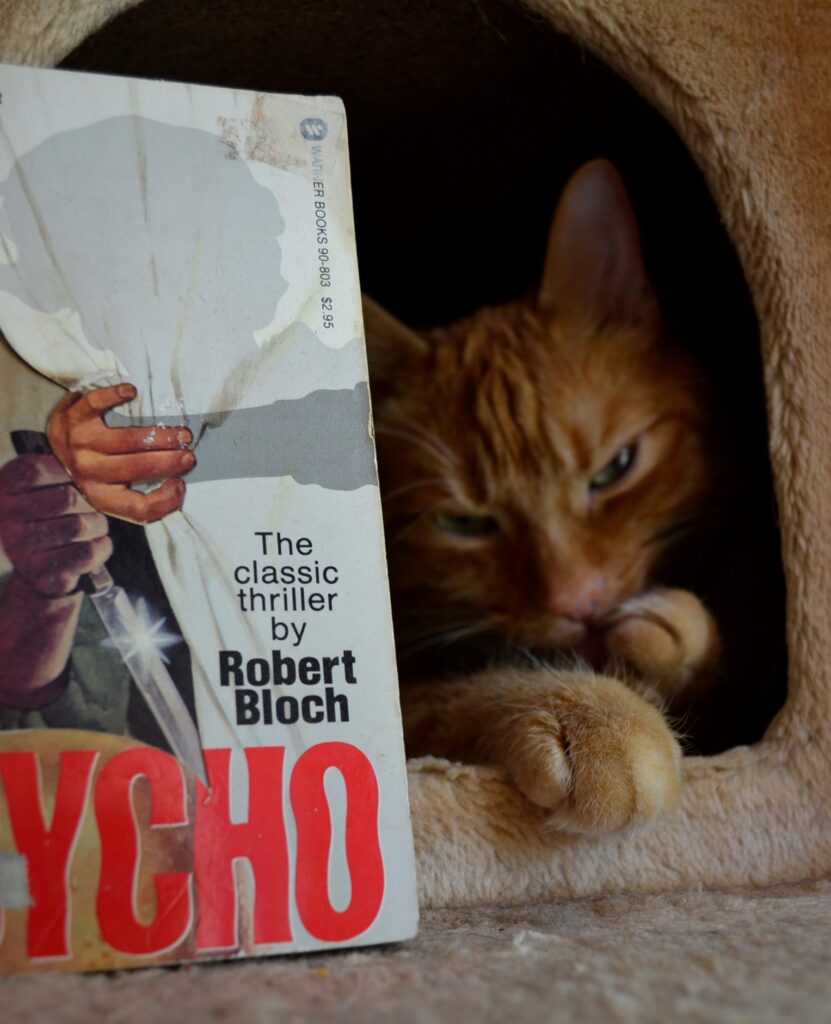
The to-read stacks are getting bigger and I don’t seem to have any more time than I did a couple of weeks ago. Well, at least horror novels tend to be short! Tune in next week for a review of Jay Anson’s The Amityville Horror as Halloween in August continues.
